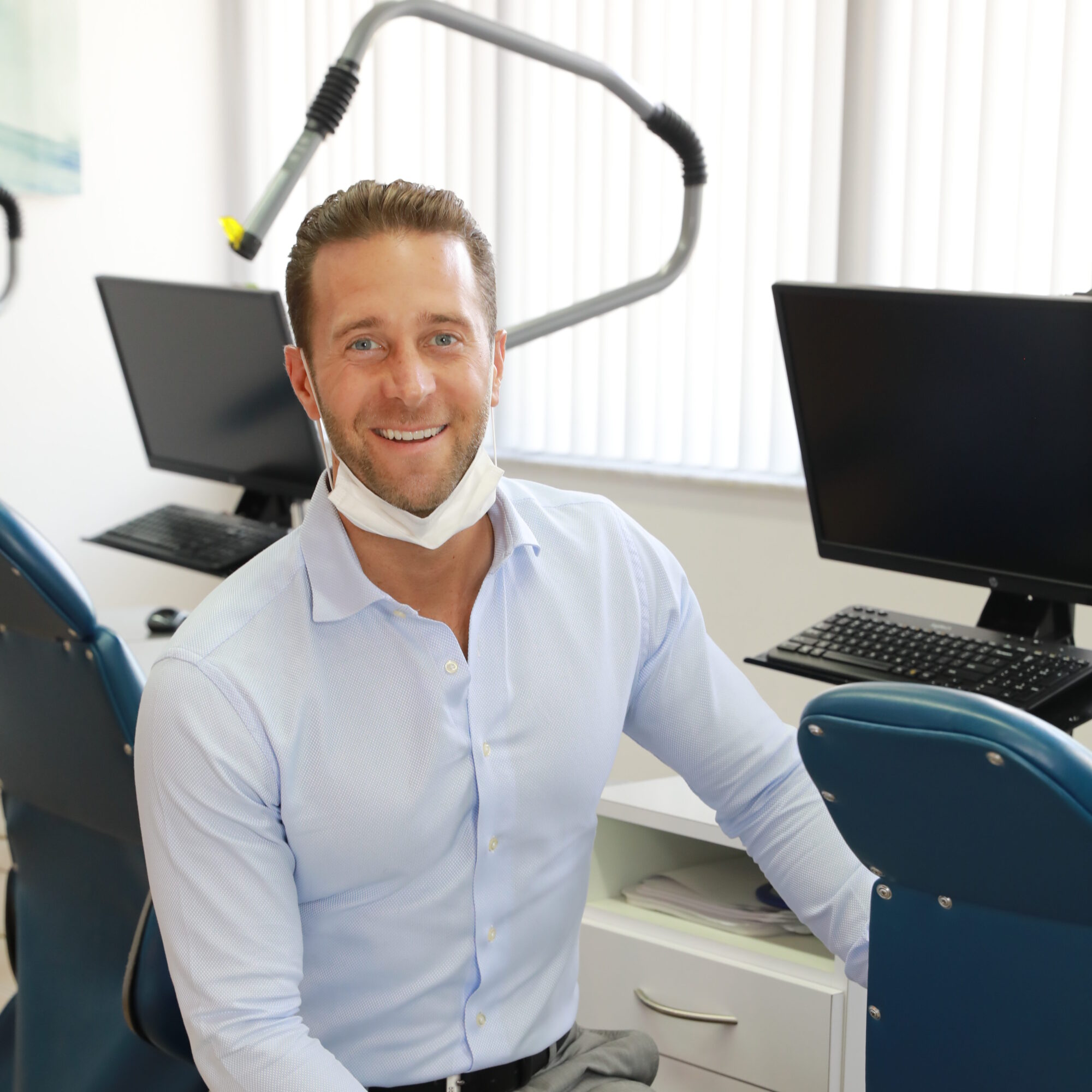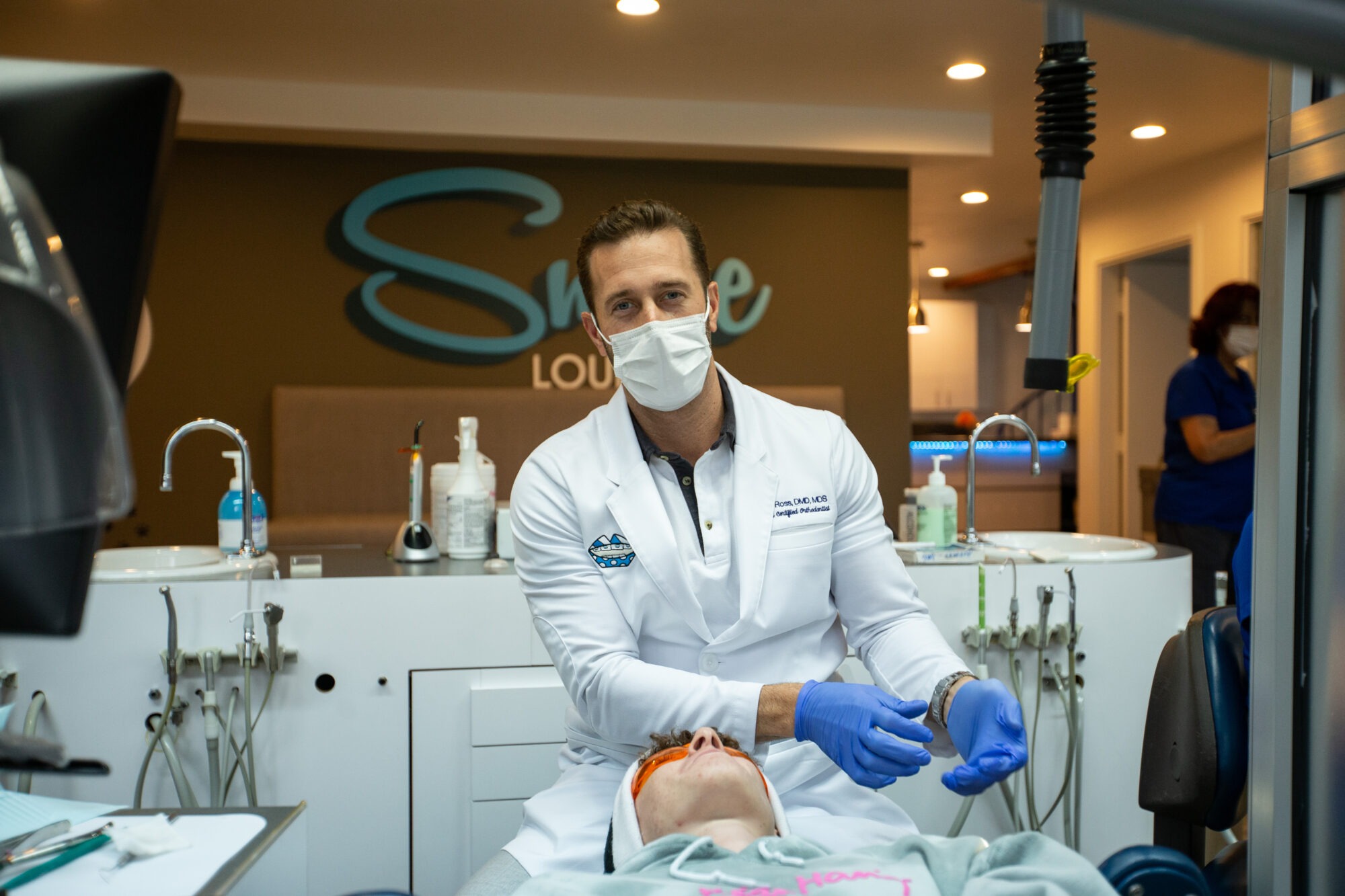If you’ve ever been on the hunt for someone new to take care of your teeth, you might have found yourself a little confused while searching the Internet. Dentist? Orthodontist?
There are actually several key distinctions between the two, and our team at Smiles of Palmetto Bay can help you understand the difference between an orthodontist and a dentist! We offer both orthodontic services and dentistry for kids!
The Broad Definitions
Both dentists and orthodontists are experts in the dental field, but they play different roles. At our office, we have two orthodontists, Dr. Ross and Dr. Iglesias, and our pediatric dentist, Dr. Garcia. Here are their general descriptions before we move on to more specific qualities of their practice:
- A dentist functions as a general dental care provider, akin to a primary care physician in the medical field, whereas specialists like orthodontists are consulted for specific concerns. Dentists offer an array of services encompassing the diagnosis and treatment of dental problems, including tooth decay, gum disease, and oral infections. Their duties include dental cleanings, fillings, and extractions.
- An orthodontist specializes in identifying, preventing, and managing dental and facial irregularities, notably addressing issues like misaligned teeth. They take on the crucial role of rectifying and aligning smiles or correcting bite problems.
Compare & Contrast
With these definitions in mind, let’s look at a couple of topics and see how dentists and orthodontists compare in their practice and background!
- Education and Training:
- Dentists: Dentists complete a general dentistry program to earn a DMD (Doctor of Dental Medicine) or DDS (Doctor of Dental Surgery) degree. At that point, they can choose whether to pursue general dentistry or a specialization in the field.
- Orthodontists: These are dentists who have had additional training in dentofacial orthopedics and orthodontics. They’ll undergo an additional two to three years of education for this qualification.
- Scope of Practice:
- Dentist: A dentist is the first point of contact for a patient. Dentists perform both cosmetic and restorative services of their own but can also opt to issue a referral.
- Orthodontist: Orthodontists use appliances like braces and clear aligners to correct issues of teeth and jaw alignment. These and other treatments can also be used for aesthetic purposes, depending on the patient.
What To Expect At Your Dentist
If you haven’t required orthodontic care and primarily visited a dentist, you might be more familiar with general dental procedures. These routine appointments can encompass the following services:
- Dental Cleanings: Dentists and dental hygienists conduct professional cleanings to eliminate plaque and tartar buildup from your teeth. This is advantageous for individuals with strong oral hygiene habits, but it is even more crucial for those who don’t!
- X-rays: Periodic X-rays are taken to evaluate your dental condition. These images are indispensable tools that not only reveal underlying issues within your teeth but also provide an additional perspective on your jawbone.
- Oral Exams: Dentists examine the condition of your individual teeth, gums, and oral tissues. This comprehensive assessment is key in the early detection of problems like cavities or oral diseases.
- Restorative Procedures: General dentists commonly perform fillings, primarily addressing cavities and decay. Additionally, they are skilled in applying crowns, bridges, and even dental implants to remedy extensively damaged or missing teeth.
- Oral Surgery: In more severe cases, dentists can carry out procedures such as root canals or extractions.

Referral to an Orthodontist
If your dentist finds issues related to tooth alignment or bite problems, it may be time for a specialist to step in! Here are some conditions that will usually constitute an orthodontic referral:
- Malocclusion
- Impacted Teeth
- Crowding
- Crooked Teeth
- Spacing Issues
Orthodontic treatment is usually a collaborative one between the patient, dentist, and orthodontist to ensure comprehensive oral care. In one example of such collaboration with other experts, Dr. Ross serves as part of the Craniofacial Team at Nicklaus Children’s Hospital!
What To Expect At Your Orthodontist
Our orthodontic team will conduct a thorough exam using tools like x-rays to evaluate your issue. Here are some key parts of our practice:
- Braces and Orthodontic Appliances: For straightening teeth, our orthodontists can employ traditional braces, clear aligners, headgear, palate expanders, or other options, depending on your situation. At Smiles of Palmetto Bay, we proudly offer Invisalign (we’re experts!), clear braces, and metal braces!
- Custom Treatment Plans: After making our diagnosis, we create personalized treatment plans outlining the specific orthodontic procedures needed to correct your alignment issues.
- Patient Education: We provide education to our patients and their families regarding topics like orthodontic appliances, oral hygiene, and dietary considerations during treatment.
- Orthodontic Surgery: Some orthodontists can collaborate with maxillofacial surgeons and oral surgeons who correct severe jaw or facial alignment issues.
The Best of Both Worlds
For both dentists and orthodontics offices, patients are the most critical part of our practice! All dental professionals work to ensure any issues you’re facing can be corrected in the most effective manner possible! If you’re curious about treatment, don’t hesitate to reach out to our Palmetto Bay office. You can also schedule a free orthodontic consultation or a pediatric dental appointment with us!
